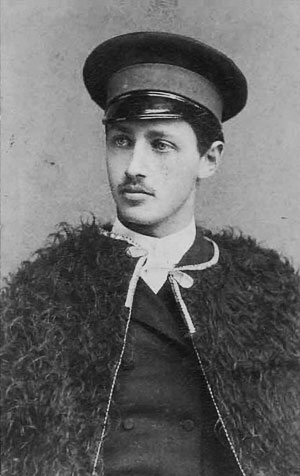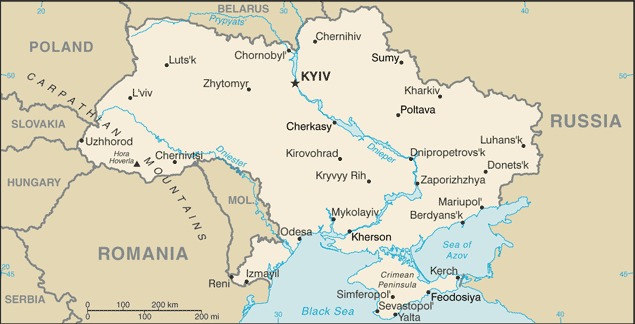|
Vorontsov Palace (Alupka)
The Vorontsov Palace (; ) or the Alupka Palace is a historic palace situated at the foot of the Crimean Mountains near the town of Alupka in Crimea. The Vorontsov Palace is one of the oldest and largest palaces in Crimea, and is one of the most popular tourist attractions on Crimea's southern coast. The palace was built between 1828 and 1848 for the Russian Prince Mikhail Semyonovich Vorontsov for use as his personal summer residence at a cost of 9 million roubles. It was designed in a loose interpretation of the Jacobethan, English Renaissance revival style by English architect Edward Blore and his assistant William Hunt. The building is a hybrid of several architectural styles, but faithful to none. Among those styles are elements of Scots Baronial Style architecture, Scottish Baronial, Indo-Saracenic architecture, Indo-Saracenic Revival Architecture, and Gothic Revival architecture, Gothic Revival architecture. Blore had designed many buildings in the United Kingdom, and was ... [...More Info...] [...Related Items...] OR: [Wikipedia] [Google] [Baidu] |
Vorontsov
The House of Vorontsov (), also Woroncow and de Woroncow-Wojtkowicz, is the name of a Russian noble family whose members attained the dignity of Counts of the Holy Roman Empire in 1744 and became Princes of the Russian Empire on 6 April 1845, with the style of Serene Highness. Most likely, the Vorontsovs represent a collateral branch of the great Velyaminov family of Muscovite boyars, which claimed male-line descent from a Varangian nobleman named Šimon. The Velyaminovs served as hereditary mayors of Moscow until the office was abolished by Dmitry Donskoy (Prince of Moscow from 1359 to 1389), whose mother Alexandra came from this family. History The Vorontsov branch of the Velyaminovs reached a zenith of its power in the person of the boyar Feodor Vorontsov, who became ''de facto'' ruler of Russia during the minority of Ivan IV ("Ivan the Terrible", 1543). Three years later, he was accused of treason and beheaded. For the next two centuries, the family history is obscure. ... [...More Info...] [...Related Items...] OR: [Wikipedia] [Google] [Baidu] |
List Of Historic Reserves In Ukraine
The list of historic reserves in Ukraine includes historic sites that in Ukraine are known as Historic and Cultural Reserves. Main historic reserves are officially listed by the Ministry of Culture (Ukraine), Ministry of Culture of Ukraine and usually known as national. However, there are other historic reserves that are established at regional level. Definition and background Historic and cultural reserves () are special legally defined territories that include ensembles and complexes of landmarks of history and culture, which possess exceptional historic, scientific and cultural value and placed under protection of the state. In Ukraine First historic and cultural reserves in Ukraine were created in 1920s. Resolutions of the Council of People's Commissars (Ukraine), Council of People's Commissars of the Ukrainian SSR proclaimed next territories as reserves: Ancient Greek Colony of Pontic Olbia (archaeological site), Olbia (31 May 1924), the Taras Hill, Monk's Hill in Kaniv &ndash ... [...More Info...] [...Related Items...] OR: [Wikipedia] [Google] [Baidu] |
Sofia Kiselyova
Count Pavel Dmitrievich Kiselyov or Kiseleff (; , Moscow – , Paris) is generally regarded as the most brilliant Russian reformer during Nicholas I's generally conservative reign. Kiselyov was plenipotentiary president ( de facto governor) of the Divans (estates of the realm) in Wallachia and Moldavia from 1829 until 1834. Early military career Kiselyov first distinguished himself during the Napoleonic Wars, serving as Count Miloradovich's aide-de-camp in the Battle of Borodino, marching with the Russian army all the way to Paris and gaining promotion to Alexander I's aide-de-camp at the close of the campaign. Five years later, Kiselyov was appointed Chief of Staff of the Second Army, stationed in Tulchyn, Podolia. It was there that he first tried to implement his reforms, including the mitigation and condemnation of corporal punishment, which aroused the animosity of the powerful War Minister, Count Arakcheyev. Pavel Pestel and other Decembrists who formed the south ... [...More Info...] [...Related Items...] OR: [Wikipedia] [Google] [Baidu] |
Odessa
ODESSA is an American codename (from the German language, German: ''Organisation der ehemaligen SS-Angehörigen'', meaning: Organization of Former SS Members) coined in 1946 to cover Ratlines (World War II aftermath), Nazi underground escape-plans made at the end of World War II by a group of ''SS'' officers with the aim of facilitating secret escape routes, and any directly ensuing arrangements. The concept of the existence of an actual ODESSA organisation has circulated widely in fictional Spy fiction, spy novels and movies, including Frederick Forsyth's best-selling 1972 thriller ''The Odessa File''. The escape-routes have become known as "Ratlines (World War II), ratlines". Known goals of elements within the ''SS'' included allowing ''SS'' members to escape to Argentina or to the Middle East under false passports. Although an unknown number of wanted Nazis and war criminals escaped Germany and often Europe, most experts deny that an organisation called ODESSA ever existed. T ... [...More Info...] [...Related Items...] OR: [Wikipedia] [Google] [Baidu] |
Napoleonic Wars
{{Infobox military conflict , conflict = Napoleonic Wars , partof = the French Revolutionary and Napoleonic Wars , image = Napoleonic Wars (revision).jpg , caption = Left to right, top to bottom:Battles of Battle of Austerlitz, Austerlitz, Fall of Berlin (1806), Berlin, Battle of Friedland, Friedland, Battle of Aspern-Essling, Aspern-Essling, French occupation of Moscow, Moscow, Battle of Leipzig, Leipzig and Battle of Paris (1814), Paris , date = {{start and end dates, 1803, 5, 18, 1815, 11, 20, df=yes({{Age in years, months, weeks and days, month1=05, day1=18, year1=1803, month2=11, day2=20, year2=1815) , place = Atlantic Ocean, Caucasus, Europe, French Guiana, Mediterranean Sea, North Sea, West Indies, Ottoman Egypt, Egypt, East Indies. , result = Coalition victory , combatant1 = Coalition forces of the Napoleonic Wars, Coalition forces:{{flagcountry, United Kingdom of Great Britain and ... [...More Info...] [...Related Items...] OR: [Wikipedia] [Google] [Baidu] |
Ivan Bunin
Ivan Alekseyevich Bunin ( or ; rus, Ива́н Алексе́евич Бу́нин, p=ɪˈvan ɐlʲɪkˈsʲejɪvʲɪdʑ ˈbunʲɪn, a=Ivan Alyeksyeyevich Bunin.ru.vorb.oga; – 8 November 1953)"Ivan Bunin" ''''. was the first Russian writer awarded the , in . He was noted for the strict artistry with which he carried on the cl ... [...More Info...] [...Related Items...] OR: [Wikipedia] [Google] [Baidu] |
Crazy Day Or The Marriage Of Figaro
''Crazy Day or The Marriage of Figaro'' () is a modern comedy musical staged by television channels NTV (Russia) and Inter (Ukraine) in association with Melorama Production, under direction of Semen Gorov in 2003, based on the 1784 Pierre Beaumarchais' play ''The Marriage of Figaro''. The musical was aired for the first time on the New Year's night of 2004. Plot The day before his wedding, handsome and merry Figaro, played by Boris Hvoshnyansky, learns of the bride Susanna (Anastasia Stotskaya), but he has a rival - voluptuous Count Almaviva, played by Philip Kirkorov. Earl intends to use the old right of the first night in his possessions and to steal from the lovers their happiness. The case becomes more complicated as another lover - Marceline (Sofia Rotaru) claims her love for Figaro as well, requiring a considerable amount of money to return and marry her. Figaro uses infinitely jealousy count to his wife Rosine, played in the movie by Lolita Miliavskaya. The reason for t ... [...More Info...] [...Related Items...] OR: [Wikipedia] [Google] [Baidu] |
An Ordinary Miracle (1964 Film)
''An Ordinary Miracle'' () is a Soviet 1964 romantic fantasy film, directed by Erast Garin and based on a play by Yevgeni Shvarts. King's palace was filmed in Vorontsov Palace. Garin himself plays the role of the King as he had in the successful production of the play in the 1950 production Plot A wizard, having settled down and turned to a quiet domestic life, cannot resist temptation when he encounters a bear in the forest. Using a hazel twig, he crafts a magic wand and transforms the bear into a handsome young man. However, he imposes a single condition: the young man will revert to being a bear if he were ever kissed by a princess. Cast * Aleksey Konsovsky as Khozyain * Nina Zorskaya as Khozyayka * Oleg Vidov Oleg Borisovich Vidov (; June 11, 1943 – May 15, 2017) was a Russian–American actor, film director and producer. He appeared in 50 films beginning in 1961. An emigrant from his native Soviet Union, he was granted U.S. citizenship and beca ... as ''The Be ... [...More Info...] [...Related Items...] OR: [Wikipedia] [Google] [Baidu] |
Cinema Of The Soviet Union
The cinema of the Soviet Union includes films produced by the constituent republics of the Soviet Union reflecting elements of their pre-Soviet culture, language and history, albeit they were all regulated by the central government in Moscow. Most prolific in their republican films, after the Russian Soviet Federative Socialist Republic, were Armenia, Azerbaijan, Georgia, Ukraine, and, to a lesser degree, Lithuania, Belarus and Moldavia. At the same time, the nation's film industry, which was fully nationalized throughout most of the country's history, was guided by philosophies and laws propounded by the monopoly Soviet Communist Party which introduced a new view on the cinema, socialist realism, which was different from the one before or after the existence of the Soviet Union. Historical outline Upon the establishment of the Russian Soviet Federative Socialist Republic (RSFSR) on November 7, 1917 (although the Union of Soviet Socialist Republics did not officially come in ... [...More Info...] [...Related Items...] OR: [Wikipedia] [Google] [Baidu] |
Cinema Of Ukraine
Ukrainian cinema comprises the art of film industry, film and creative movies made within the nation of Ukraine and also by Ukrainian film makers abroad. Despite a history of important and successful productions, the industry has often been characterized by a debate about its identity, the level of Russian and European influence. Ukrainian producers are active in international co-productions, while Ukrainian actors, directors and crew feature regularly in Russian (and formerly Soviet) films. Successful films have been based on Ukrainian people, stories or events, including ''Battleship Potemkin'', ''Man with a Movie Camera'', and ''Everything Is Illuminated (film), Everything Is Illuminated''. The Ukrainian State Film Agency owns National Oleksandr Dovzhenko Film Centre, film copying laboratory and archive, and takes part in hosting of the Odesa International Film Festival. Another festival, Molodist in Kyiv, is the only FIAPF accredited International Film Festival held in Ukr ... [...More Info...] [...Related Items...] OR: [Wikipedia] [Google] [Baidu] |
Ministry Of Culture And Strategic Communications
The Ministry of Culture and Strategic Communications (MCSC), known previously as Ministry of Culture and Information Policy (MCIP), is the main state authority in the system of central government of Ukraine responsible for ensuring the informational sovereignty of Ukraine, in particular regarding the dissemination of socially important information in Ukraine and beyond, as well as ensuring the functioning of state information resources and country's cultural development and history preservation. It is fully based on the former Ministry of Culture and Tourism (that was dissolved in 2010). The Honcharuk Government (on 29 August 2019) merged the Ministry of Youth and Sports, established on February 28, 2013, and the Ministry of Culture (MinCult), established on December 9, 2010, into the Ministry of Culture, Youth and Sports. [...More Info...] [...Related Items...] OR: [Wikipedia] [Google] [Baidu] |





